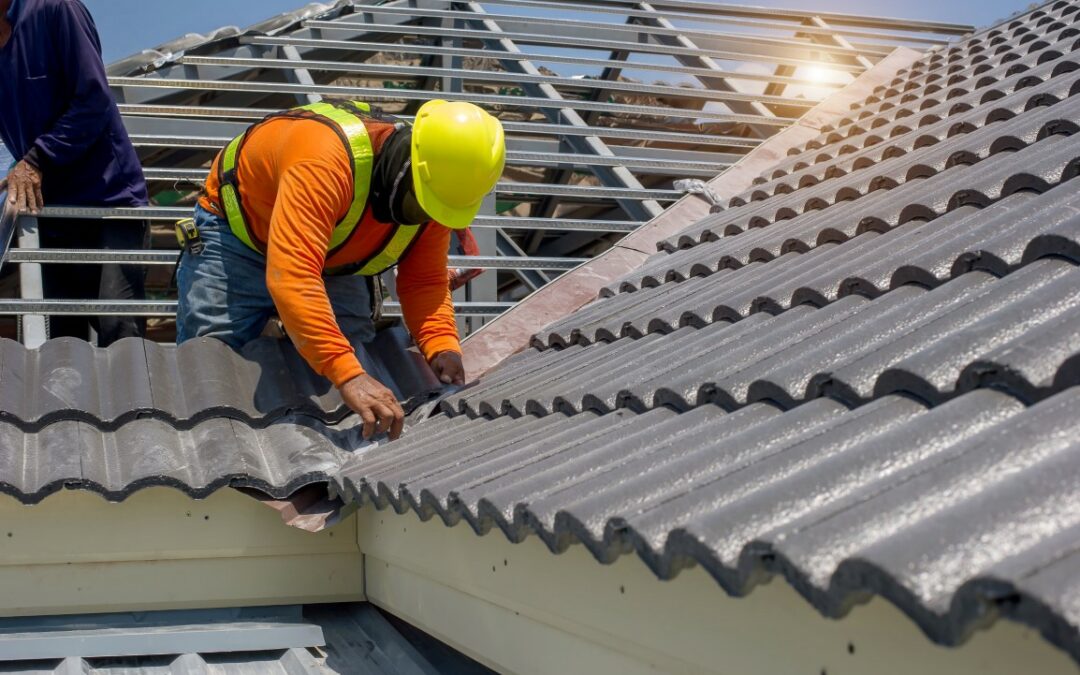When it comes to selecting the best roofing materials for installation, we’ve got you covered. With so many options available, it can be overwhelming to make the right choice. But fear not, we’re here to help.
In this informative article, we’ll explore the factors you need to consider, the pros and cons of common roofing materials, and how to balance longevity and durability with your budget. Join us as we dive into the world of roofing materials and find the perfect fit for your home.
Key Takeaways
- Evaluate the environmental impact and sustainability of materials, considering factors such as recyclability, energy efficiency, and carbon footprint.
- Consider the aesthetics and curb appeal of roofing materials, ensuring they complement the architectural style and blend seamlessly with the surroundings.
- Compare the longevity and durability of different materials, taking into account maintenance requirements and potential repairs.
- Assess the cost and budget considerations, including overall expenses for installation and exploring cost-effective alternatives.
Factors to Consider
When selecting the best roofing materials for installation, there are several factors to consider. First and foremost, one must evaluate the environmental impact of the chosen materials. As responsible homeowners, we should strive to minimize our carbon footprint and choose materials that are sustainable and eco-friendly. This means opting for materials that are recyclable, energy-efficient, and have a minimal impact on natural resources.
Another crucial factor to consider is the aesthetics and curb appeal of the roofing materials. Our homes are a reflection of our style and taste, and the roof plays a significant role in enhancing the overall appearance of our property. Therefore, it’s essential to choose materials that complement the architectural style of our home and blend seamlessly with the surrounding environment.
Common Roofing Materials
We will now explore the various types of roofing materials commonly used for installation. When it comes to roofing material comparisons, it’s essential to consider the environmental impact.
One popular option is asphalt shingles, known for their affordability and durability. They’re available in a wide range of colors and styles, making them a versatile choice.
Another common choice is metal roofing, which offers excellent longevity and resistance to harsh weather conditions. Metal roofs are also recyclable, making them an environmentally friendly option.
Additionally, clay tiles and slate shingles provide a classic and elegant look, although they can be more expensive. Understanding the pros and cons of each roofing material is crucial in making an informed decision that meets both your needs and the environment’s requirements.
Pros and Cons of Each Option
Now let’s delve into the advantages and disadvantages of each roofing material option.
When considering the environmental impact, it’s important to note that some materials, like metal and clay tiles, are more sustainable choices as they can be recycled and have a longer lifespan. On the other hand, asphalt shingles, although widely used, have a shorter lifespan and contribute to landfill waste.
In terms of aesthetics and curb appeal, asphalt shingles come in a wide variety of colors and styles, making them a popular choice for many homeowners. Additionally, wood shakes and shingles offer a natural and rustic look that can enhance the overall appearance of a property. However, it’s worth mentioning that wood materials require regular maintenance and are more susceptible to fire and insect damage compared to other options.
Longevity and Durability
Moving on to the topic of longevity and durability, let’s examine how each roofing material holds up over time.
When it comes to maintenance requirements, some materials require more attention than others. For instance, asphalt shingles may need occasional repairs and replacements, while metal roofs typically require minimal maintenance.
It’s important to consider the environmental impact as well. Materials like asphalt shingles aren’t as eco-friendly as options like metal or tile roofs, which can be recycled at the end of their lifespan.
Considering the longevity, durability, maintenance requirements, and environmental impact of each roofing material is crucial in making an informed decision. Now, let’s transition into the next section where we’ll discuss the cost and budget considerations of these roofing options.
Cost and Budget Considerations
When considering the cost and budget for the installation of roofing materials, it’s important to evaluate the overall expenses involved. One way to manage costs is by exploring roofing material alternatives that offer cost-effective options. These alternatives can provide a balance between affordability and quality.
For instance, asphalt shingles are a popular choice due to their low cost and durability. They come in a variety of colors and styles, making them a versatile option for different architectural designs.
Another cost-effective option is metal roofing. Although it may have a higher upfront cost, it offers long-term savings due to its durability and energy efficiency. Additionally, clay tiles are a durable and aesthetically pleasing option, but they can be more expensive.
Conclusion
In conclusion, when selecting the best roofing materials for installation, it’s crucial to consider factors such as longevity, durability, cost, and budget. By weighing the pros and cons of common materials, homeowners can make an informed decision. Remember, the right choice will provide the desired protection and aesthetic appeal. So, whether it’s a durable and cost-effective asphalt shingle or an elegant and long-lasting slate tile, choose wisely for a secure and stylish roof.

